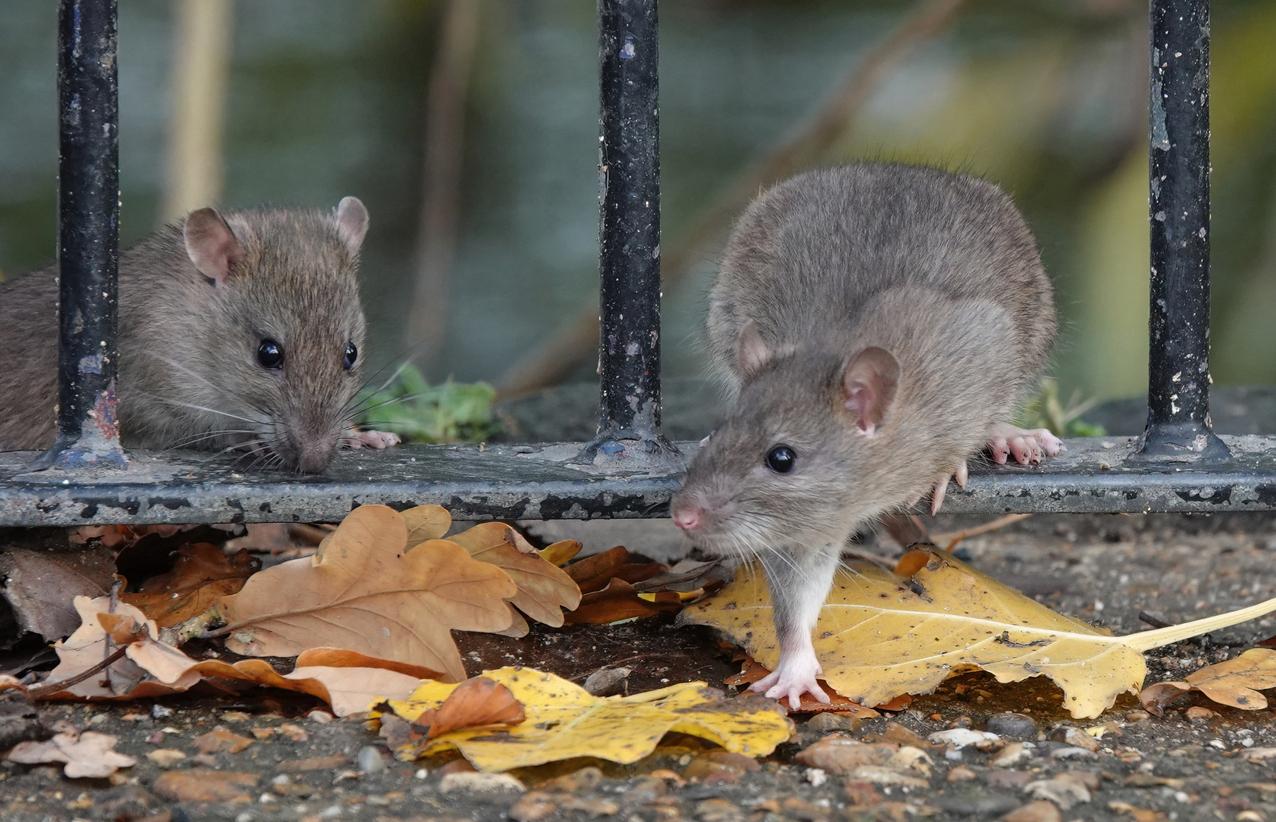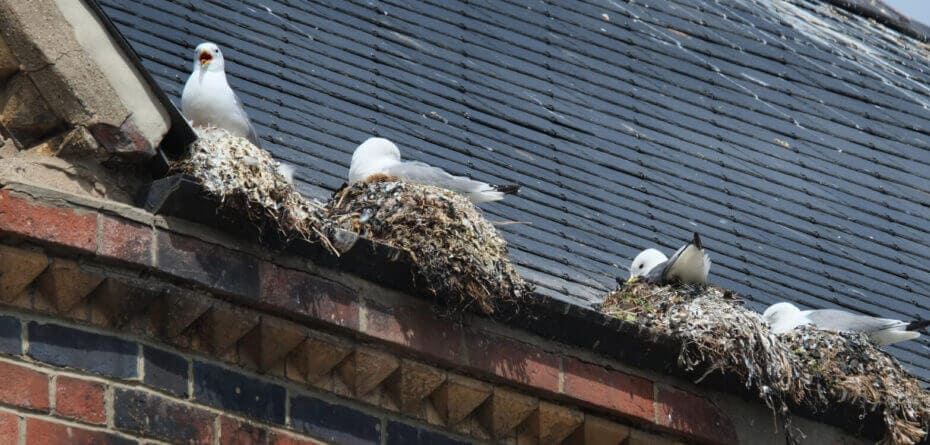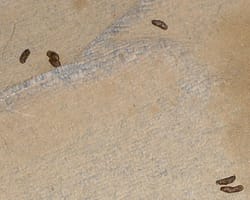Nests and nesting materials are visual indicators of a mouse infestation, helping to identify the presence of these pests. In order to accurately determine if you have a mouse infestation, it is important to look for nests made from shredded material such as paper, fabric, or insulation.
The presence of nesting materials in unusual places, like cupboards or behind furniture, can also be a red flag for a mouse infestation. Additionally, chewed-up insulation or gnaw marks on household items may indicate the presence of mice. By being aware of these visual indicators, you can take the necessary steps to address a mouse infestation in your home or property.
Understanding Mouse Behavior
Visual indicators of a mouse infestation can be found in their nests and nesting materials. Understanding mouse behavior can help identify if your home is infested with mice.
Mice As Common Household Pests
- Mice are small, agile creatures that are commonly found in households, making them one of the most prevalent pests worldwide.
- They have a remarkable ability to squeeze through tiny crevices, allowing them easy access to homes.
- Mice pose various health risks as they carry diseases and parasites that can be transmitted to humans.
- Their nesting behaviors can cause damage to property, particularly when they chew through materials to construct their nests.
Nesting Behavior Of Mice
- Mice are prolific nest builders and will create multiple nests within their territory.
- They usually build their nests in secluded and warm areas, such as attics, wall voids, and basements.
- Nests are typically constructed using a variety of materials, including paper, fabric, insulation, and even shredded materials like newspaper and cardboard.
- Mice often select nesting materials based on availability within their immediate surroundings.
Relationship Between Nests And Mouse Infestations
- The presence of nests is a clear indicator of a mouse infestation in a property.
- Finding multiple nests throughout your home suggests that a significant mouse population exists.
- Nests, particularly those recently constructed, may contain fresh droppings and gnaw marks, further confirming an active infestation.
- Discovering nests near a food source, such as the kitchen or pantry, indicates that mice are actively foraging in those areas.
By understanding mouse behavior, we can identify visual indicators of a mouse infestation through their nesting habits. Mice, as common household pests, exhibit prolific nest-building behaviors, constructing nests using various available materials. The presence of multiple nests throughout a property is a strong indication of a mouse infestation and should prompt immediate action to address the problem.
Identifying Mouse Nests
Mouse nests can be identified through visual indicators, such as shredded paper, insulation, and fabric, found in tucked-away corners or hidden spaces. These nesting materials serve as clear signs of a potential mouse infestation.
Characteristics Of Mouse Nests
- Mouse nests are usually made of soft materials such as shredded paper, fabric, or insulation. These materials provide insulation and comfort for the mice and their young.
- Nests are about the size of a softball and have a spherical shape. They are typically hidden in corners, crevices, or rarely disturbed areas.
- Mouse nests are constructed with great precision, using meticulous weaving patterns to create a secure structure for the mice.
- Mice often incorporate other items into their nests, such as twigs, feathers, and even bits of human food packaging. These additional materials add strength and insulation to the nest.
Signs Of Nesting Activity
- Gnaw marks on materials: Mice have sharp incisors that help them chew through various materials to gather nesting materials. Look for chewed-up paper, fabric, or insulation around your home.
- Presence of droppings: Mice leave behind small, pellet-like droppings near their nests. Keep an eye out for these telltale signs.
- Accumulation of shredded materials: If you notice a significant accumulation of shredded paper, fabric, or insulation, it could be a sign of nesting activity.
- Strange noises: Mice are stealthy creatures, but you might hear scratching or rustling sounds coming from within walls, ceilings, or hidden corners where they have built their nests.
- Unusual odors: Mouse nests can emit a musty smell due to the accumulation of organic materials. If you detect an unfamiliar odor, it may be an indication of nesting nearby.
Common Locations For Mouse Nests
- Attics and crawl spaces: These areas provide mice with warmth, shelter, and limited human disturbance, making them ideal nesting locations.
- Wall voids: Mice may find gaps or cracks in walls to establish their nests. The insulation within the walls offers them protection and insulation.
- Basements and storage areas: Dark, cluttered spaces are attractive to mice seeking a safe environment to build their nests.
- Garages and sheds: Rodents often take advantage of these structures due to the access they provide to food and nesting materials.
- Cabinets and drawers: Mice can easily squeeze into small openings, making cabinets and drawers potential nest sites, particularly if they contain materials suitable for nesting.
Remember, identifying mouse nests can be a crucial step in detecting an infestation. By recognizing the characteristics, signs, and common locations of mouse nests, you can take appropriate actions to address and prevent mouse problems in your home.
Visual Indicators Of Mouse Infestation
Identifying a mouse infestation is crucial to controlling it. An indication of nesting materials, such as shredded paper, fabric or insulation, can help detect the presence of mice in your space. Look out for these visual indicators to address the issue promptly.
Mouse infestations can be a nuisance, causing damage to property and posing potential health risks. Identifying visual indicators of a mouse infestation can help you take prompt action to eradicate these unwanted pests. Here are some signs to look out for:
Shredded Materials In And Around Nests:
- Piles of shredded paper, fabric, or other soft materials: Mice often gather and build nests using readily available materials found within their surroundings.
- Shredded insulation from walls or attics: These tiny rodents are resourceful when it comes to making their cozy nests.
- Strips of chewed cardboard or wood: Mice have sharp teeth and can gnaw on various materials, leaving behind shredded remnants.
Accumulation Of Nesting Materials:
- Neatly arranged materials in hidden areas: Mice prefer secluded spots for their nests and may accumulate nesting materials in corners, behind furniture, or within cluttered spaces.
- Large quantities of nesting materials in a single location: A significant accumulation of materials may indicate an established nesting site, potentially harboring a sizeable mouse population.
- Presence of natural materials, like grass or feathers: Mice often incorporate organic matter into their nests, adding another visual clue to their presence.
Presence Of Feces And Urine Near Nests:
- Small dark droppings scattered in a concentrated area: Mice leave droppings as they move around, and finding them close to nesting sites suggests recent activity.
- Strong ammonia-like odors: The urine of mice has a distinctive smell, and its pungent odor can be an indicator of a nearby nest.
Damage To Stored Food And Property:
- Gnaw marks on food packaging or containers: Mice have a knack for finding and contaminating stored food, leaving behind telltale signs of their presence.
- Chewed wires, furniture, or structural materials: The constant need to gnaw on objects helps mice maintain their teeth and can result in costly damage to your home or belongings.
- Scratching or scampering noises, especially at night: Mice are nocturnal creatures, and hearing these sounds can indicate their presence within your walls or ceilings.
Identifying these visual indicators of a mouse infestation can help you determine if you need to take action to eliminate these unwanted pests from your home. Act swiftly to prevent further damage and potential health risks associated with mouse infestations.

Credit: www.pestdefence.co.uk
Preventing And Eliminating Mouse Infestations
Visual indicators of a mouse infestation lie in the presence of nests and nesting materials. Detecting these signs is crucial for preventing and eliminating mouse infestations effectively.
Mice infestations can be a nuisance, damaging property and posing health risks. To prevent and eliminate mouse infestations effectively, it’s crucial to adopt proactive measures. Here are some methods you can employ:
Removing Potential Nesting Sites:
- Keep your living spaces clean and clutter-free, minimizing hiding spots for mice.
- Regularly sweep and vacuum floors, especially in hard-to-reach areas such as corners and gaps behind furniture.
- Store food in airtight containers, reducing attractive food sources for mice.
- Seal and discard any unused or damaged food packages promptly.
- Remove piles of debris, leaves, and wood near your home, as they can serve as potential nesting sites for these rodents.
Sealing Entry Points:
- Conduct a thorough inspection of your home, checking for any gaps or cracks in walls, foundations, or windows.
- Seal off these entry points using materials like steel wool and caulk, preventing mice from sneaking in.
- Pay special attention to utility entry points, such as pipes and electrical conduits, ensuring they are properly sealed.
- Install door sweeps and weather stripping to close gaps beneath doors, blocking mouse entry.
Using Traps And Baits:
- Set up mouse traps in strategic areas where you suspect mouse activity, such as along walls, near potential nests, and close to food sources.
- Use a variety of traps, including snap traps, glue traps, and catch-and-release traps, depending on your preference.
- Employ bait stations loaded with bait blocks or poison pellets designed specifically for mice.
- Check and reset traps regularly until you no longer find any mice caught.
Seeking Professional Pest Control Assistance:
- If the infestation persists or seems extensive, it may be best to consult with professional pest control experts.
- Pest control professionals have the knowledge, experience, and tools to effectively deal with mouse infestations.
- They can conduct a comprehensive inspection of your property, identify nesting sites, and develop a tailored pest control plan.
- Professional pest control services can provide long-term prevention measures, ensuring the infestation does not recur.
By implementing these preventative measures and taking immediate action against mouse infestations, you can safeguard your home and family from these unwelcome pests. Stay proactive and vigilant, and seek professional help when needed to address mouse infestations promptly and effectively.
Frequently Asked Questions Of Nests And Nesting Materials: Visual Indicators Of A Mouse Infestation
What Signs Indicate Mouse Infestation?
Signs of mouse infestation include droppings, gnawed holes, shredded materials, and unusual smells.
What Are Nesting Materials For Mice?
Mice use items like paper, cloth, twigs, and leaves for nesting.
How Do You Identify A Mouse Nest In Your House?
To identify a mouse nest in your house, look for signs like shredded paper, fabric or insulation, gnawed furniture, and small droppings in hidden corners or behind objects.
Where Do Mice Usually Nest In A House?
Mice usually nest in houses in warm, hidden areas like attics and wall cavities.
Conclusion
Being aware of the visual indicators of a mouse infestation can help identify and address the problem early on. By keeping an eye out for nests and nesting materials, like shredded paper, fabric, and insulation, you can detect the presence of mice and take immediate action to prevent further damage and potential health risks.
Remember that mice reproduce rapidly, so it’s crucial to act swiftly. Once you’ve identified a mouse infestation, consider implementing effective pest control strategies, such as removing potential food sources, sealing entry points, and using traps or repellents. Regularly cleaning and decluttering your surroundings can also help prevent mice from finding suitable nesting sites.
With these proactive measures in place, you can protect your home, belongings, and loved ones from the negative consequences of a mouse infestation. Stay vigilant and address any signs of infestation promptly to maintain a pest-free environment.

